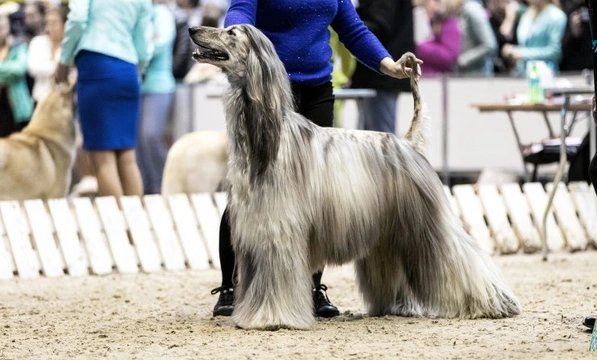
How are best in show classes judged at dog shows?
Most formal dog shows held in the UK for pedigree dogs are designed to assess the quality of individual competitors against their respective breed standards, to find the best representative of each breed within each individual class.
Often, even classes for a specific breed will be broken down further into categories reflecting the age and sex of different dogs, so that by the time all of the breed classes have been judged, there will be several first-placed winners from their respective sections.
These winners are often then judged again in a breed or category section (such as terriers, gun dogs, pastoral dogs and so on) to find the best representative of the type, and then there is often a final class in the show too, to find the very best dog from the whole competition.
However, because the best in show judging class will have dogs from across a variety of different dog breeds represented within it, many dog owners are unsure about how an ultimate winner is chosen, and the judging criteria used to enable this.
The confusion is understandable – for instance, how could you compare a dog like a poodle to a dog like a pug and determine which of them is the better dog? If you have ever wondered how the best in show class at pedigree dog shows are judged and how the judges can compare many different breeds of dog to pick an ultimate winner, this article is for you. Read on to find out how best in show winners are judged at dog shows.
What type of dog shows hold best in show classes?
Many if not most dog shows finish off the event with a best in show class, from informal local dog shows at village fetes to the biggest and best-known dog show of them all; Crufts.
For the purposes of this article we’re talking about formal dog shows for pedigree dogs, which are designed to judge the best examples of dogs of recognised pedigree breeds based on their conformation, temperament, and adherence to the desirable breed standards.
Formal Kennel Club affiliated dog shows in the UK are structured throughout the year and form heats for winning dogs to go on to compete at a higher level – classes like these allow dogs to qualify for the aforementioned Crufts dog show, and a number of other high-profile shows leading up to it too.
Perhaps the ultimate goal for ambitious pedigree dog show competitors is to have their dog make it through to the best in show events at Crufts, which is televised worldwide and widely thought of as the most prestigious award a dog can win.
What dogs are eligible for best in show judging?
The exact criteria for which dogs make it through to best in show judging might vary depending on the type of show they are in and the other classes held, but within formal dog shows, the dogs that make it through to best in show will have already passed through one or more classes on the way. These will generally be a breed class that may be divided further into the ages and genders of the competing dogs, then potentially a best of breed class and/or a best of type class (according to the relevant Kennel Club group the dog falls within) with the winning dogs from these final classes invited to compete for the best in show award at the end of it all.
How do dog show judges pick a best in show winner?
Best in show judging requires the judges to pick a winner (and reserves) from a selection of dogs that will generally come from a diverse range of different dog breeds and group types.
This means that the class’s judges need to compare all of the different dog breeds in front of them side by side to choose the ultimate winner. So, how do the judges determine the best dog from what will often be vastly different breeds?
Essentially, the dog that is considered to be the best example of the breed that they represent will be awarded the winner’s prize – and so whilst the dogs in the ring are competing against each other, they are not being compared to each other like for like. Rather, each dog is being measured up against the breed standards that apply to them and scored on this basis, and the dog that impresses the judges most becomes the ultimate winner.
This means that the judges of best in show classes need to be very experienced in assessing and judging dogs of a wide range of different breeds, and they may refer back to the breed standards and confer (when more than one judge is present) to determine their final pick.
Best in show classes judged by breed standard will take a close look at the conformation of each dog in the ring, as well as the way they move, their temperament, attitude, and general performance.
All of the finalists that make it through to a best in show class have done very well to make it that far, but for the winner (and sometimes, the first runner up too) winning best in show also provides an opportunity to make it through to the next heat in the showing calendar, and potentially, to progress all the way to Crufts itself.



